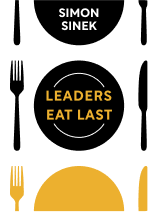

This article is an excerpt from the Shortform book guide to "Leaders Eat Last" by Simon Sinek. Shortform has the world's best summaries and analyses of books you should be reading.
Like this article? Sign up for a free trial here .
Do you feel like your organization has a supportive work environment? What can you, as a leader, do to cultivate a supportive work culture in your organization?
In a supportive work environment, employees feel that you see them as people, rather than mere assets to increase profits. In his book Leaders Eat Last, management theorist Simon Sinek suggests three strategies to strengthen your supportive environment and encourage trust and collaboration.
Let’s explore Sinek’s strategies for cultivating a supportive environment in the workplace.
Strategy #1: Prioritize Long-Term Goals
Oxytocin helps you create a supportive work environment by forging empathetic connections between you and your subordinates. Sinek believes that you can encourage oxytocin production in both your employees and yourself by prioritizing long-term goals. For example, instead of focusing on your company’s profits for this year, plan how you’ll impact the market for the next five. This puts your decisions in the context of causing lasting positive change, rather than immediate, temporary success.
Prioritizing Short-Term Goals Stifles Oxytocin
According to Sinek, a major reason you should prioritize long-term goals is the drawbacks of the alternative: prioritizing short-term goals. Fulfilling short-term goals encourages your body to produce dopamine, rather than oxytocin. Dopamine is a neurochemical that motivates and rewards you for completing tasks by providing happy feelings, much like oxytocin. However, while oxytocin motivates you to form relationships—a long-term goal, since relationships take time to form—dopamine motivates you to complete short-term tasks—for example, writing a report—and is immediately produced in large amounts.
(Shortform note: Experts say that part of dopamine’s motivational nature is improved memory: When you successfully complete a short-term goal, you first feel happy, then the dopamine helps your brain store the memory of that happiness. This memory motivates you to try again and reminds you how to succeed the next time you attempt that task. Dopamine-enhanced memory is a good thing, in that it helps you learn and succeed more easily in the future, but it can also have a negative influence, as it can form bad habits by motivating you to repeat unhealthy behaviors.)
Many people neglect their oxytocin production because it takes time to compound and make them happy. Instead, they focus on producing as much instant gratification through dopamine as possible. For leaders at work, this focus on instant gratification manifests as fixating on the company’s daily operations while neglecting how those daily decisions influence your subordinates or the company’s long-term goals, Sinek implies. The more fixated on producing dopamine you are, the less oxytocin you produce, the less empathetic you are, and the weaker your company’s supportive environment becomes.
(Shortform note: Another problematic element of seeking instant gratification is growing a tolerance to dopamine: If you rely only on dopamine to make you feel happy, you’ll be tempted to continually trigger your brain to produce more. However, the more you trigger dopamine production, the less effective it becomes and the more you have to escalate your dopamine-seeking behavior—for example, starting to use drugs—to feel happy. Fortunately, you may be able to reset your dopamine tolerance through fasting: If you don’t trigger dopamine production for a while, your brain will be much more sensitive to it when you do experience it next.)
Strategy #2: Unite Against Common Hardship
Another strategy you can use to strengthen supportive environments is uniting against common hardship, Sinek says. Facing hardship as a group increases oxytocin production: Your brain rewards you for collaborating with your subordinates and coworkers in a threatening situation, and these higher oxytocin levels strengthen the supportive environment.
(Shortform note: Sinek says that oxytocin production increases when you collaborate with others in a threatening environment. Is this any different from collaborating in a non-threatening situation? Experts say yes. When you experience hardship, your brain is more engaged: You must monitor the threat, think of solutions to the problem, and work with others to enact those solutions. This state of heightened engagement means you remember the connections you forged during the threatening experience better than you would those from a non-threatening experience. Since your brain rewards you for forming connections, these strong memories trigger higher levels of oxytocin.)
Most companies unite against common hardship by nurturing a higher purpose. Sinek explains that a higher purpose is similar to a long-term goal in that it takes time and company-wide cooperation to complete. However, higher purposes are more abstract than long-term goals: They usually provide a sense of meaning beyond making profits or dominating a field, and they don’t have concrete timelines for completion. When you and your subordinates are devoted to fulfilling this kind of purpose, the possibility that you’ll fail to do so becomes enough of a threat to encourage collaboration and strengthen the supportive environment.
Higher Purposes Must Be Currently Unachievable and Selfless
Sinek explains that there are two conditions your higher purpose must meet to effectively encourage your group to unite:
1. Your company can’t currently have the resources to fulfill the higher purpose. If your higher purpose is easily fulfilled, Sinek says it doesn’t provide the necessary pressure to inspire cooperation and oxytocin production. Your company needs to continually struggle to fulfill the higher purpose. This struggle applies constant external pressure, which inspires your subordinates to collaborate and experiment with innovative ways of fulfilling the higher purpose.
2. The higher purpose must serve others. Selflessness is an important element of an effective higher purpose because it’s inspirational, and inspired people work harder and are more dedicated. Sinek implies that helping others is inspirational because it prompts your brain to release higher levels of oxytocin. The happy feelings oxytocin provides motivate you and your subordinates to continue working hard and helping others.
On the other hand, selfish goals, like becoming a leader in your industry or making a certain amount of profit, won’t inspire your employees because that goal only benefits the company, which doesn’t release oxytocin.
Amazon’s vision statement is a good example of an effective higher purpose: “to be earth’s most customer-centric company, where customers can find and discover anything they might want to buy online…” Amazon can’t immediately fulfill this vision because “be the most customer-centric” and “be where customers can find anything they want” aren’t static goals: Amazon must adjust its approach as technology advances and people’s expectations for customer service and products change. Thus, Amazon constantly innovates new customer service initiatives and adds products to its stores, attempting to meet that goal. In addition, Amazon’s higher purpose serves others, as the company helps customers find the products they need, which inspires its employees.
Strategy #3: Combat Abstraction
Sinek explains that combating abstraction means forcing yourself and your subordinates to see your customers, suppliers, and each other as people rather than abstract ideas. This is another way to strengthen supportive environments. As discussed, oxytocin is released through social contact, especially physical contact such as shaking hands. When you don’t have social contact with other people, you stop producing oxytocin and therefore stop feeling empathy for those people: They become abstract ideas rather than people.
When that happens, your focus shifts to what you can understand concretely: your own safety. For company leaders, this usually manifests as making decisions that maximize profits without considering how those decisions will affect consumers and employees. For employees, this manifests as following orders, even if the company or customers would be harmed by those orders. Thus, everyone focuses only on their own benefit, rather than supporting each other or helping the company grow, destroying the supportive environment.
How to Combat Abstraction
In today’s globalized world, most companies don’t have social contact with their customers, suppliers, or even employees, but that doesn’t have to cause a shift to abstraction. Sinek recommends a couple of methods for combating abstraction and strengthening your supportive environment:
1. Interact with your suppliers, employees, and customers in person as much as possible, and help your subordinates do the same, Sinek says. Doing so reminds you that you’re working with people and gives your brain the opportunity to produce oxytocin and form trusting relationships.
(Shortform note: Sinek points out that interacting with people in person helps your productivity by strengthening the supportive environment. Ken Blanchard and Sheldon M. Bowles suggest in Raving Fansthat these kinds of interactions can be profitable in a more immediate way as well: When you continually interact with your customers, suppliers, and coworkers, you give them the opportunity to provide feedback. They can alert you to any potential issues and help you adjust your processes and customer service to be the most profitable and productive possible.)
2. Interact with people you’ve helped. As discussed above, inspiration encourages hard work and determination. Seeing the positive effect your efforts have on others inspires you to continue in those efforts. This is why volunteering at a soup kitchen can feel more fulfilling than donating money: Volunteering is more concrete and feels more meaningful.

———End of Preview———
Like what you just read? Read the rest of the world's best book summary and analysis of Simon Sinek's "Leaders Eat Last" at Shortform .
Here's what you'll find in our full Leaders Eat Last summary :
- Why a leader must prioritize her subordinates’ needs above her own
- How empathy and support can be strong managerial tools
- Why you must see your customers, suppliers, and employees as people






